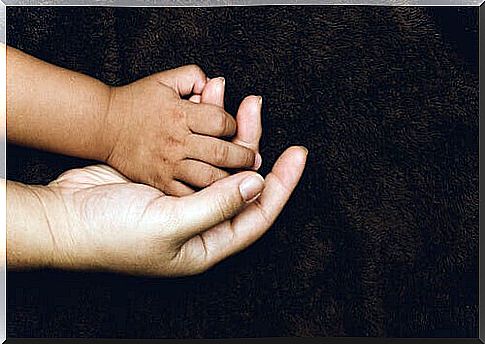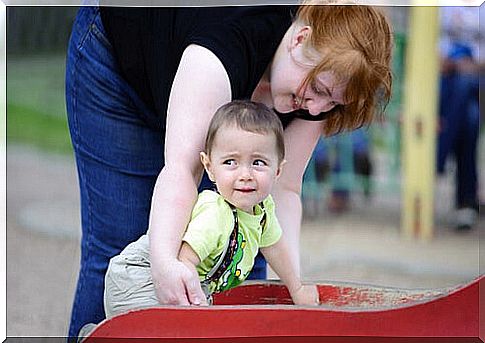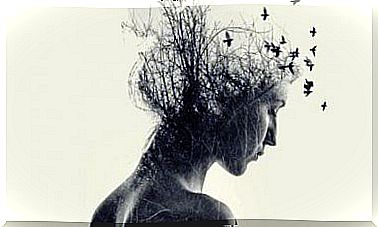Strange Situation Technique: Classifying Attachment

Attachment is the bond that exists between two people characterized by great affective intensity. Normally, it is a long-term relationship with a high special and binding component. In this sense, Mary Ainsworth was the pioneer in developing the first tool to assess the type of attachment specifically in children. It was known as the strange situation technique.
This mother-baby bond is not exclusive to human beings, since many animal species also manifest it. However, it is the only one that requires a longer time to form that bond. Attachment is consolidated when there is unconditionality on the part of the other.
Attachment goal
Getting healthy first bonds of attachment is essential. Its purpose, therefore, is to achieve safety, comfort, protection and the satisfaction of the baby’s basic needs. Thus, depending on the attachment style they develop towards their caregivers, the little ones may find greater or less proximity, emotional refuge, protest against separation and a base of security.
This connection not only influences the child’s immediate well-being, but also marks his or her psycho-evolutionary development. For this reason, deficiencies in the early stages can affect other more advanced stages in their adulthood and maturity.

Necessary conditions for an attachment to form
For the first attachment to form, a series of minimum conditions are necessary that a baby must fulfill. These requirements ensure the development of this link properly:
- Have a sufficient repertoire of attachment behaviors: signaling, such as smiles or babbling; aversive and / or active, such as following and approaching their mother.
- These behaviors must attract the adult, establishing and producing privileged interactions between them.
- Have minimal affective capacities.
- Possess a series of minimal cognitive resources to recognize, accumulate memories and forge expectations regarding their attachment figure.
Strange situation technique
The strange situation technique is a laboratory process that was designed by the American psychologist Mary Ainsworth in 1960. Its objective was to study the type of interaction that a mother or an (strange) adult has with the child in a non-existent environment. family. Such has been its implication in developmental psychology that it is currently used to classify attachment types.
Simulations
The strange situation technique tries to simulate certain contexts to analyze how the child behaves when he leaves his comfort zone. That is, your transition between the safe environment of home and the exploration of another that is not familiar to you. From observation, it is of special interest to know what the reactions of the child are when he is separated from his mother. And, later, when he meets her again.
This simulation consists of 8 episodes and is designed to be performed with children from approximately one year of age. It is around those 12 months when the relationship between baby and caregiver should already be clearly established.

Procedure
In one of the most frequent variations of this technique, Ainsworth would place the boy next to his mother in a room full of toys. Later, a stranger entered the room and the mother left, leaving the child with the stranger. Then the mother came back in. Later, she and the stranger left the room and left the little boy alone. Then the adult would re-enter.
With this, the psychologist was able to evaluate the reactions and interactions that occurred between the attachment figure and the child. Both in the presence of toys and when the little one was with a stranger and alone.
Types of attachment
Based on the technique of the strange situation, 3 types of attachment have been established : secure, evasive and ambivalent.
- Insurance becomes evident when the child is able to freely explore the environment when separated from the caregiver. He is anguished at the mother’s departure, but upon her return, she is greeted with enthusiasm.
- The avoidant, for his part, is also characterized by the anguish that the child experiences in the absence of his mother. But, unlike the previous one, when the attachment figure returns, they tend to avoid it. That is, they are indifferent whether she is present or not.
- The insecure-ambivalent person shows signs of distress throughout the procedure. Thus, in the strange situation technique, he manifests anger towards his caregiver, especially when he is absent.
Currently, the child’s attachment does not fully determine the personality and quality of adult personal relationships. However, it can greatly influence the interactions that it establishes in higher stages of its development. Hence, since the 1960s, its study has been massive and forms part of the most basic pillars of developmental psychology.









